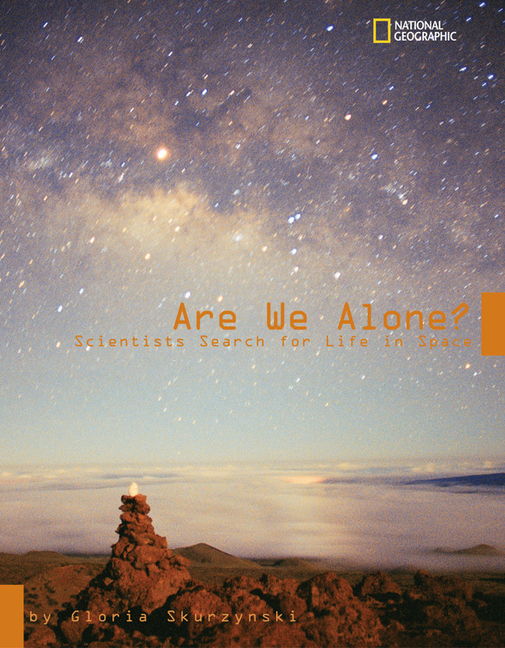Book Descriptions
for Are We Alone? by Gloria Skurzynski
From Cooperative Children's Book Center (CCBC)
The search for extraterrestrial intelligence is compellingly presented is this informative and accessible volume. Beginning with a description of the first reports of UFO sightings (and with a list of credible natural explanations for the phenomenon), the author moves on to describe the relevant work of several contemporary scientists. Astronomers, evolutionary biologists, oceanographers, planetary geologists, and astrophysicists alike strive to understand life in extreme environments, from hostile habitats on earth to destinations in space about which little is known. Sidebars highlighting several of the featured scientists from around the world convey their dedication, endless curiosity, and impressive academic credentials as they work at the cutting edge of their field. Despite difficulties, from failed fieldwork to a lack of funding, these men and women are clearly driven to search for answers to provocative questions about life on earth and beyond. (Ages 9–14)
CCBC Choices 2005 . © Cooperative Children's Book Center, Univ. of Wisconsin - Madison, 2005. Used with permission.
From the Publisher
In the jungle of Puerto Rico, next to a giant aluminum telescope bowl, we meet astronomers Peter Backus and Jill Tarter of the SETI (Search for Extraterrestrial Intelligence) program. This research program is determined to find evidence of extraterrestrial life by searching for its radio signals. They hope to catch radio waves created by some kind of life far out in space. These scientists love their work: Arriving in the control room, Jill puts on a tape of her favorite samba music by a group called Viva Brazil. Others in the room stay seated and propel themselves on their wheeled office chairs from workstation to workstation, but Jill usually gets up and sambas across the floor. In this rare combination of engaging narrative and factual information, Gloria Skurzynski uses techniques she's developed as a fiction writer to energize her science writing. This book not only brings the reader into the world of extra-terrestrial science, but is also very much about the hopes and dreams of real people. She lends a strong personal voice to the narrative, drawing the reader deep into the world of extraterrestrial study. Humans have always been fascinated with extraterrestrial life, and the book traces that interest, including the origination of the term "flying saucer." Sloan also explains why scientists don't buy it. There's been no hard evidence, not a single artifact left behind-a lost boot, or a shred of whatever material the UFO was made of, or even a flake of alien skin. But not believing in flying saucers doesn't mean scientists don't believe in extraterrestrial life. They look for it using telescopes, space missions, and planet explorations. They study extremophiles, organisms that live in extreme environments on Earth, in the hopes that they will lead us to a better understanding of how life may exist in space. Really, what could be out there? This book visits scientists across the globe who are trying to find out, from Puerto Rico to California, from Socorro, New Mexico to Chile, Finland, Spain, and Hawaii. And, what's on tap for the future of extraterrestrial study? Researchers study hydrothermal vents deep under the sea, create super-sensitive radio telescopes, and scour the highest lake in the world. Extremely well written, filled with little-known facts, and often quite humorous, this book brings to life a subject that children are intrigued by. Our time is truly a fascinating moment in scientific exploration, and this book will help anyone get a jump on the search for E.T. Who knows? Maybe there's an alien as close as next-door-a next-door planet, that is!
Publisher description retrieved from Google Books.


